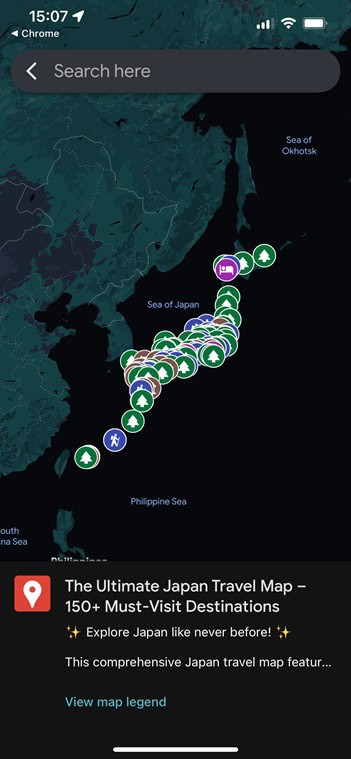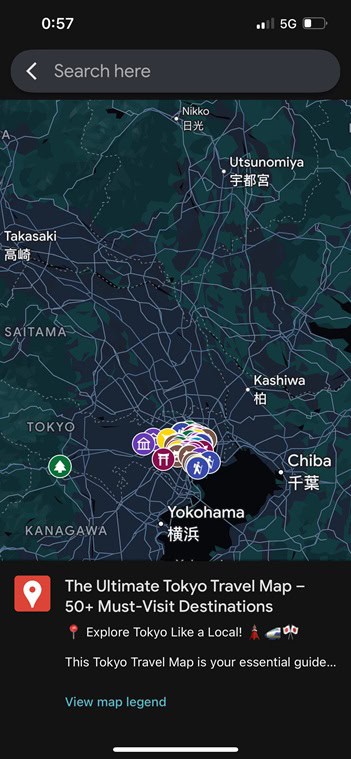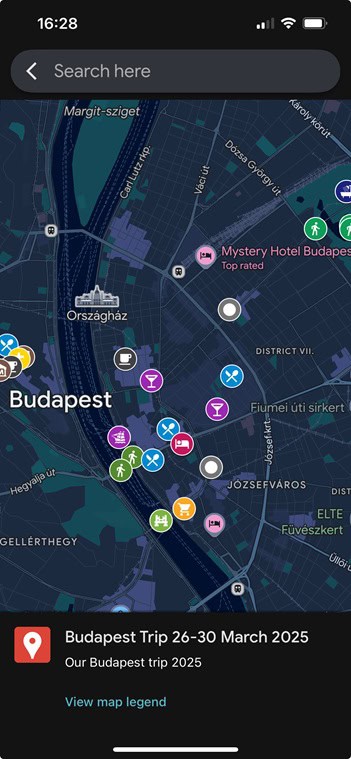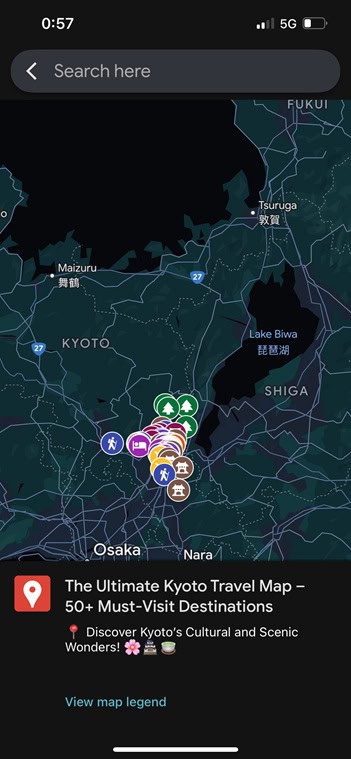Introduction: Where Stone Walls Whisper Samurai Tales
Picture this: towering white walls rising from mist-covered moats, wooden staircases creaking beneath your feet, distant views of cherry blossoms or snow-capped mountains—all while standing in the footsteps of samurai. Japan’s castles are more than historical relics. They’re immersive gateways into a world of honor, strategy, elegance, and resilience.
From iconic national treasures like Himeji Castle to off-the-radar fortresses tucked in serene countryside towns, these impressive structures preserve the legacy of Japan’s feudal past and its warrior class. Whether you’re traveling with curious kids or diving into samurai lore as a cultural explorer, visiting these castles is a rewarding, time-traveling experience.
Here’s your curated guide to the most breathtaking castles across Japan—what to expect, when to go, and how to experience each one meaningfully.
TL;DR (Too Long; Didn’t Read)
This guide spotlights Japan’s best castles—from icons like Himeji and Matsumoto to quiet originals such as Hikone and Matsue. Use our map and quick table to plan by region, season, and family needs. Each castle includes tips on getting there by train, time needed, stroller/access notes, and nearby stays—plus ideas for tours, gardens, and evening illuminations. Add a JR Pass for multi-region trips and an eSIM for easy navigation.
| Castle | Region / Nearest City | Original? | Best Season | Family Notes | Time Needed |
|---|---|---|---|---|---|
| Himeji Castle | Hyōgo / Osaka-Kyoto | Yes | Spring (cherry blossoms), Autumn | Maze-like paths; limited food inside; bring snacks | 2–3 hrs |
| Matsumoto Castle | Nagano / Shinjuku | Yes | Autumn leaves, Winter snow | Steep stairs; lockers at station | 1.5–2 hrs |
| Hikone Castle | Shiga / Kyoto-Osaka | Yes | Spring, Autumn | Quiet, mascot “Hikonyan” for kids | 1–2 hrs |
| Kumamoto Castle | Kyūshū / Fukuoka | Partially Restored | Spring blossoms, Night light-ups | Large grounds; restoration areas open gradually | 2 hrs |
| Matsue Castle | Shimane / Okayama-Hiroshima | Yes | All year; atmospheric sunsets | Tied to folklore; nearby samurai district | 1–2 hrs |
| Inuyama Castle | Aichi / Nagoya | Yes | Spring, Autumn | Compact, family-friendly; combine with Meiji Mura | 1–1.5 hrs |
| Shuri Castle | Okinawa / Naha | Reconstruction | Year-round | Unique Ryukyuan culture; reconstruction visible | 1–2 hrs |
| Nagoya Castle | Aichi / Nagoya | Reconstruction | Spring blossoms | Honmaru Palace restored; great for culture buffs | 1–2 hrs |
| Okayama Castle | Okayama | Reconstructed | Spring, Autumn | Combine with Korakuen Garden | 1–1.5 hrs |
| Uwajima Castle | Ehime / Matsuyama | Yes | All year | Hill climb; quiet atmosphere | 1 hr |
| Takamatsu Castle | Kagawa / Takamatsu | Partially Original | Spring | Unique saltwater moat | 1 hr |
Get Your FREE London Travel Map + 5 Must-Have Travel Resources!
Plan smarter, stress less, and make every trip unforgettable with these exclusive tools—100% FREE!
📩 Sign up now & download instantly!

Himeji Castle – The White Heron of Japanese Architecture
Why Visit
Arguably Japan’s most celebrated castle, Himeji Castle is a masterpiece of feudal architecture and design. Often nicknamed the “White Heron Castle” for its pristine, soaring elegance, this UNESCO World Heritage Site has survived war, earthquakes, and modernization—making it one of the few castles in Japan that remains entirely original.
Highlights
- Panoramic views from the top of the six-story main keep.
- Fascinating defensive features: maze-like pathways, concealed rooms, and arrow slits designed to protect the lord’s family during siege.
- Seasonal beauty: visit in early April for cherry blossoms or November for golden ginkgo leaves.
- Nearby Koko-en Garden is a stunning Edo-style retreat perfect for post-castle relaxation.
Family Tip
Kids will love imagining themselves as samurai while exploring the maze of passageways and watching local re-enactments. Be sure to pack snacks, as there’s limited food inside the grounds.
Klook.comHimeji Castle – Getting There
From Osaka or Kyoto, take the JR Sanyo Line (~1 hr) to Himeji Station. The castle is a 15-minute walk from the station. Use the JR Pass if traveling across regions, or a Suica IC Card for local rides.
Japan’s rail network makes castle-hopping simple. For multi-region adventures, a JR Pass can save time and money, while Suica IC Cards are perfect for quick city rides. Both are available through Klook.
🛏️ Where to Stay Near Himeji Castle
Hotel Nikko Himeji – 📍 Steps from Himeji Station. ✨ Spacious rooms, on-site dining, perfect for families.
Check availability →
Daiwa Roynet Hotel Himeji – 📍 Central location, easy walk to castle. ✨ Modern design, reliable comfort.
Book here →
💡 Tip: Himeji fills up fast during cherry blossom season — book early!
Matsumoto Castle – The Black Crow of the North
Why Visit
If Himeji is the elegant swan, Matsumoto Castle is its darker, moodier counterpart. Known as the “Crow Castle” for its jet-black exterior, it offers a stunning contrast—and a glimpse into the gritty realities of Japan’s warrior history.
Located in Nagano Prefecture, it’s also one of Japan’s 12 original castles, meaning much of its structure, including interiors, remains untouched by modern reconstruction.
Highlights
- Striking moat reflections of the black keep—especially dramatic in winter.
- Inside: steep staircases, wooden interiors, and artifacts like spears and flintlock rifles.
- The Tsukimi Yagura (Moon Viewing Tower) provides scenic views over the Northern Alps.
Traveler Insight
Autumn brings a beautiful carpet of red and yellow leaves around the moat. Consider visiting during one of the seasonal festivals when the grounds are illuminated at night.
Matsumoto Castle – Getting There
From Tokyo’s Shinjuku Station, ride the JR Azusa Limited Express to Matsumoto (about 2.5 hours). The castle is an easy 15-minute walk or short bus ride from the station.
Klook.com🛏️ Where to Stay Near Matsumoto Castle
Matsumoto Hotel Kagetsu – 📍 5 min walk to castle. ✨ Traditional charm with modern comforts.
View rooms →
Dormy Inn Matsumoto – 📍 Near station. ✨ Rooftop onsen, great for relaxing after sightseeing.
Reserve →
💡 Tip: Many travelers pair Matsumoto Castle with a stay in the Japanese Alps — book flexibly.
Hikone Castle – Hidden Gem with Deep Heritage
Why Visit
Located on the shores of Lake Biwa in Shiga Prefecture, Hikone Castle is one of the lesser-known gems in Japan’s castle network. Yet, it’s among the very few castles designated as National Treasures, and one of the best-preserved, too.
It’s ideal for travelers seeking an intimate, crowd-free castle experience steeped in authentic detail.
Highlights
- Explore the Hikone Castle Museum, housed in the original palace, with a deep dive into regional samurai history.
- Enjoy the peaceful gardens and teahouses within the castle grounds.
- Meet Hikonyan, the region’s beloved samurai cat mascot—especially entertaining for kids!
Cultural Explorer Tip
The view from the top includes both castle rooftops and the shimmering waters of Lake Biwa—a peaceful contrast to the battlefield vibes of some other fortresses.
Hikone Castle – Getting There
From Kyoto or Osaka, take the JR Tokaido Line to Hikone Station (50–90 minutes). The castle grounds are around a 15-minute walk away.
🛏️ Where to Stay Near Hikone Castle
Hikone Castle Resort & Spa – 📍 Right by the castle. ✨ Rooms with castle views, relaxing spa.
Check prices →
Villa Castle Ginza ヴィラ キャッスル 銀座 – 📍 Local stay near Hikone. ✨ Stylish villa with Japanese design.
See details →
💡 Tip: Hikone’s boutique stays get booked quickly on weekends — plan ahead.
Kumamoto Castle – Resilience & Restoration
Why Visit
Kumamoto Castle, located in Kyushu, is known as one of Japan’s strongest and most fortified castles. Though it suffered extensive damage in a 2016 earthquake, it’s made a remarkable comeback—and in many ways, its restoration adds depth to the experience.
The sleek black walls and golden tiles evoke strength and sophistication, while immersive exhibits inside highlight its history of warfare and recent recovery efforts.
Highlights
- Tour areas reopened after renovation, including the main keep and interior exhibits.
- Walk the massive stone ramparts, which demonstrate the castle’s ingenious earthquake-resistant designs.
- Nighttime light-up events often take place during cherry blossom or holiday seasons.
Planning Note
Kyushu cuisine is part of the adventure—don’t leave without trying Kumamoto’s famous karashi renkon (spicy stuffed lotus root) or basashi (horse sashimi, if you’re feeling adventurous).
Kumamoto Castle – Getting There
From Fukuoka’s Hakata Station, take the Kyushu Shinkansen to Kumamoto (40 minutes). Then ride a tram (about 15 minutes) straight to the castle area.
Klook.com🛏️ Where to Stay Near Kumamoto Castle
Hotel Nikko Kumamoto – 📍 Central Kumamoto. ✨ Elegant rooms, walking distance to castle.
Book here →
The Blossom Kumamoto – 📍 By Kumamoto Station. ✨ Sleek design, easy access to city highlights.
Reserve →
💡 Tip: Kumamoto is a base for exploring Kyushu — stay central for flexibility.
Need More Help Planning Your Trip?
Matsue Castle – Japan’s Last Great Feudal Fort
Why Visit
One of the few remaining original wooden castles in Japan, Matsue Castle carries an air of dignity and age. Located in Shimane Prefecture—a region often overlooked by tourists—it provides a quieter, more contemplative experience.
The castle has strong connections to samurai folklore, regional mythology, and ghost stories, making it a favorite for literature buffs and curious explorers.
Highlights
- Scenic views of Lake Shinji and surrounding pine forests.
- Climb to the top floor for sweeping countryside vistas.
- Nearby samurai district and Lafcadio Hearn Memorial Museum offer rich cultural context.
Storytelling Tip
Introduce teens or adults to Lafcadio Hearn’s eerie short stories set in Matsue before visiting. The atmosphere of the castle and surrounding town pairs perfectly with tales of haunted staircases and moonlit legends.
Matsue Castle – Getting There
From Okayama, board the Yakumo Limited Express to Matsue Station (about 2.5 hours). The castle is a 20-minute walk or a quick bus ride from the station.
🛏️ Where to Stay Near Matsue Castle
Hotel Ichibata – 📍 By Lake Shinji. ✨ Great views, family-friendly hot spring baths.
Check rooms →
Dormy Inn Express Matsue – 📍 Central Matsue. ✨ Reliable comfort, onsen, good for families.
See rates →
💡 Tip: Matsue fills up during autumn festivals — secure your stay early.
Inuyama Castle – Oldest Castle Tower in Japan
Why Visit
Perched above the Kiso River in Aichi Prefecture, Inuyama Castle holds the title of having Japan’s oldest original wooden keep, dating back to 1537. Unlike many restored castles, this one feels wonderfully raw and authentic—with creaky wooden floors, steep staircases, and panoramic views that transport you centuries back.
It’s also compact and manageable, making it ideal for families with children or travelers wanting a historical site that doesn’t demand a full-day commitment.
Highlights
- The keep offers sweeping views of the Kiso River and surrounding countryside.
- Minimalistic architecture that reflects early feudal functionality.
- A charming castle town below filled with shops, tea houses, and regional sweets.
Family Travel Tip
Combine your visit with a stop at Meiji Mura, a nearby open-air museum that features preserved Meiji-era buildings—great for learning and interactive exploration.
Inuyama Castle – Getting There
From Nagoya Station, take the Meitetsu Line to Inuyama Station (about 25 minutes). It’s a 15-minute walk from there to the castle.
Klook.com🛏️ Where to Stay Near Inuyama Castle
Hotel Indigo Inuyama Urakuen Garden – 📍 Next to the castle. ✨ Luxury design, cultural setting.
View options →
JR Gate Tower Hotel Nagoya – 📍 30 min train from Inuyama. ✨ Upscale stay at Nagoya Station.
Book now →
💡 Tip: Inuyama is an easy day trip from Nagoya, but staying nearby gives you serene evenings.
Discover Our Ultimate Collection of Travel Maps
Shuri Castle – Okinawa’s Royal Jewel
Why Visit
Far from the castles of mainland Japan, Shuri Castle in Okinawa offers a completely different story. This vibrant red palace served as the royal seat of the Ryukyu Kingdom and blends Chinese, Japanese, and indigenous Okinawan elements into its design and symbolism.
Though tragically damaged by fire in 2019, Shuri Castle is actively being reconstructed, and its outer areas, gardens, and gates are open to visitors.
Highlights
- Striking vermillion architecture and dragon motifs not found in mainland castles.
- Learn about the Ryukyuan kingdom’s independent culture, diplomacy, and art.
- Enjoy local Okinawan food and music nearby—this is heritage with a unique island flavor.
Historical Insight
The site powerfully reflects Okinawa’s distinct identity. Visiting during reconstruction offers a special opportunity to witness the preservation of culture in real-time.
Shuri Castle – Getting There
From Naha Airport, ride the Okinawa Monorail (Yui Rail) to Shuri Station (about 30 minutes). The castle can be reached on foot or with a short bus ride.
🛏️ Where to Stay Near Shuri Castle (Okinawa)
Hyatt Regency Naha, Okinawa – 📍 Central Naha. ✨ Pool, dining, family-friendly amenities.
Check deals →
Hotel Collective – 📍 Kokusai Street, Naha. ✨ Stylish rooms, rooftop pool, great for cultural explorers.
See rooms →
💡 Tip: Naha hotels are popular year-round — book ahead for summer and Golden Week.
Memorable Mentions
Can’t get enough of Japanese castles? These honorable mentions are well worth adding to your list:
- Nagoya Castle (Aichi) – Under reconstruction, but the Honmaru Palace is fully restored and a masterpiece of Edo-period interior design. Around 15 minutes by subway from Nagoya Station.
- Okayama Castle (Okayama) – Known as “Crow Castle,” its sleek black facade contrasts beautifully with the nearby Korakuen Garden, one of Japan’s top three gardens. A 30-minute walk or tram ride from Okayama Station.
- Uwajima Castle (Ehime) – One of the original 12 castles, tucked into a hillside and perfect for hikers or off-the-beaten-path explorers. About 20 minutes on foot from Uwajima Station.
- Takamatsu Castle (Kagawa) – One of the few Japanese castles with a saltwater moat, right near the Seto Inland Sea. Only 10 minutes’ walk from Takamatsu Station.

Test Your Travel Smarts with Our Quizzes!
Think you know your way around the world? From cultural traditions to hidden gems, our short and playful travel quizzes are the perfect way to challenge yourself, learn something new, and maybe even spark your next adventure. Great for anyone who loves a bit of travel trivia fun!
Tips for Exploring Castles in Japan
Visiting a Japanese castle can be one of the most enriching parts of your trip—but a little planning makes it even better. Here are essential tips for castle adventurers:
- Timing is Everything: Spring (cherry blossoms) and autumn (fall colors) are the most photogenic and popular seasons. Visit early in the day to avoid crowds.
- Dress Comfortably: Castles often involve climbing narrow, steep wooden staircases and walking long distances. Wear grippy shoes and bring water.
- Mind the Interiors: Many castles prohibit shoes inside, so wearing easy slip-ons is helpful.
- Bring Cash: Entry fees, especially at smaller or regional castles, may not accept cards.
- Travel Light: Large bags may not be allowed inside keeps. Use station lockers when needed.
- Use TravelSpend: Track your travel costs efficiently and stay within budget while exploring heritage sites.
- Get Connected: If navigating to castles in rural areas, use a travel eSIM service like Airalo or Yesim to stay online and access maps, opening times, or weather updates on the go.
- Learn Before You Go: Brush up on basic castle terminology like tenshu (main keep), moat, yagura (turret), and ishigaki (stone walls) for deeper appreciation.
- Tickets & Passes: A JR Pass is ideal if you’re covering several regions, while Suica IC Cards make short city trips hassle-free. You can compare both on Klook before your trip:
Conclusion: Walking in the Footsteps of the Samurai
Japanese castles aren’t just historic sites—they’re immersive experiences that blend architecture, legend, and nature into something unforgettable.
For cultural explorers, each keep reveals the complexities of feudal warfare, artistry, and the rise and fall of dynasties. For families, these castles transform into real-life time machines—complete with towers to climb, armor to admire, and sweeping views that make you feel part of something epic.
From the pristine white elegance of Himeji to the quiet coastal charm of Matsue, and the island pride of Shuri, these castles allow travelers to connect with Japan’s samurai past in vivid, tangible ways.
Plan Your Ultimate Japan Trip
FAQs: Visiting Japan’s Best Castles
Q: Which Japanese castles are original wooden structures?
A: Notable originals include Himeji, Matsumoto, Hikone, Inuyama, Matsue, and several smaller ones like Uwajima. These retain historic interiors, steep stairs, and wooden beams that reconstructed concrete keeps often lack.
Q: What’s the best time of year to visit Japan’s castles?
A: Spring (late March–early April) for cherry blossoms and autumn (late October–November) for foliage offer the most dramatic views. Winter can be atmospheric at northern castles like Matsumoto, while summer has longer hours and festivals.
Q: How long should I plan for each castle visit?
A: Budget 60–120 minutes per castle. Larger sites with gardens or museums (Himeji + Koko‑en, Hikone Museum) can take 2–3 hours, especially if you enjoy photography or guided tours.
Q: Are Japanese castles suitable for families with young children?
A: Yes, but expect very steep, narrow staircases inside original keeps. Strollers generally aren’t allowed inside; soft carriers help. Use station lockers for bulky bags and plan snack breaks in nearby gardens.
Q: Do I need to book tickets in advance?
A: Most castles sell tickets on site, but seasonal illuminations, combo passes, and special exhibitions may sell out. For guided experiences or skip-the-line options, consider reputable platforms.
Q: What’s the easiest way to reach popular castles by train?
A: Most are accessible via JR or private rail from major hubs like Osaka, Kyoto, Nagoya, or Fukuoka. Use a route planner to compare trains and times, and consider an IC card (Suica) for convenience.
Q: Are guided tours worth it?
A: If you value deeper context—defenses, folklore, restoration details—guided tours add a lot, especially at Himeji, Hikone, and Kumamoto. Evening light-ups and garden combos are popular guided experiences.
Q: Can I visit several castles on one trip with a rail pass?
A: Yes. If your route spans multiple regions, a JR Pass can be cost-effective. For short city hops, an IC card is more practical. Build your route around hubs (Osaka/Kyoto/Nagoya) to minimize transfers.
📌 Love cultural travel? Explore more ideas on Pinterest →













